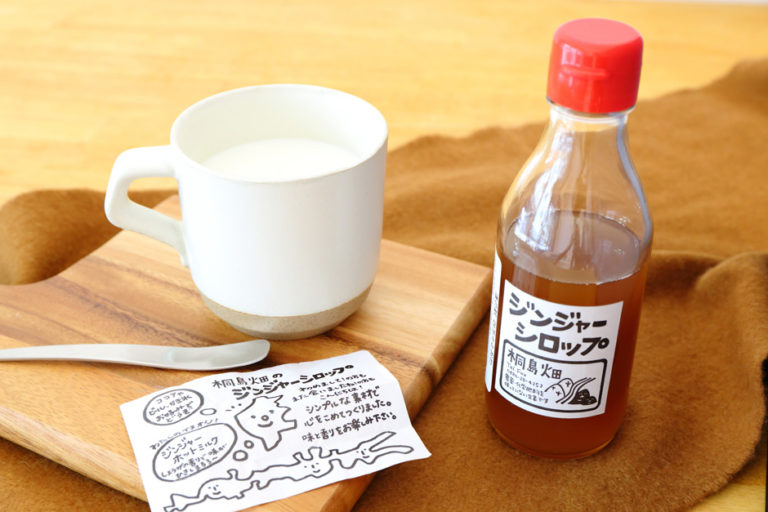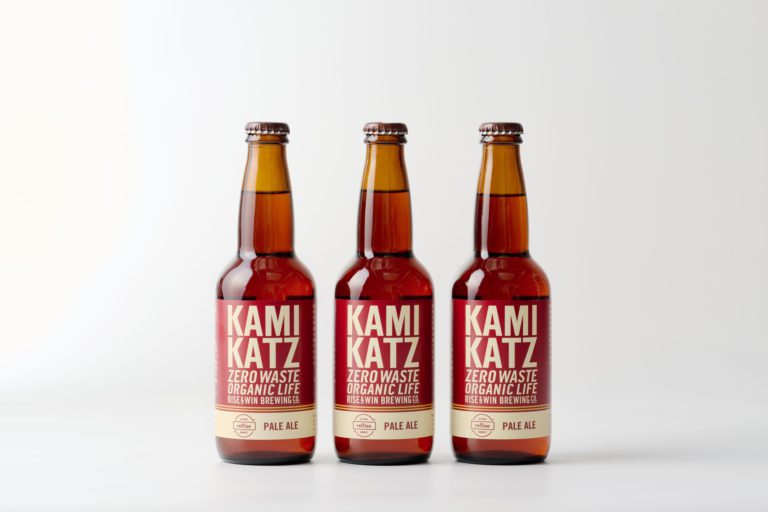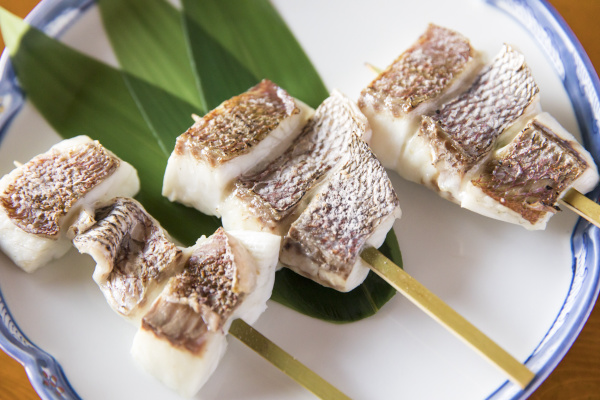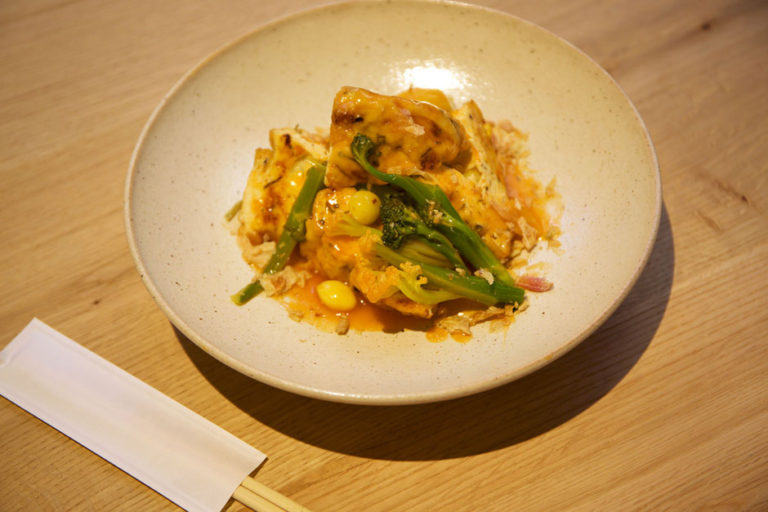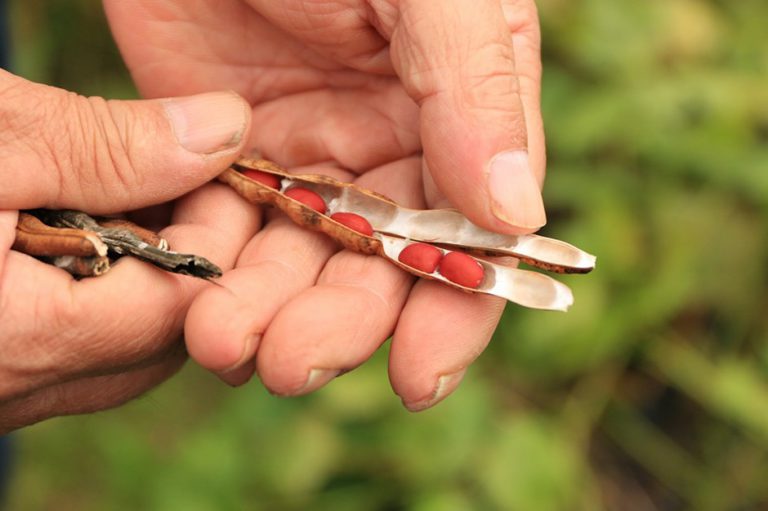Growing with Nature’s Rhythm: Ginger from Shimanto
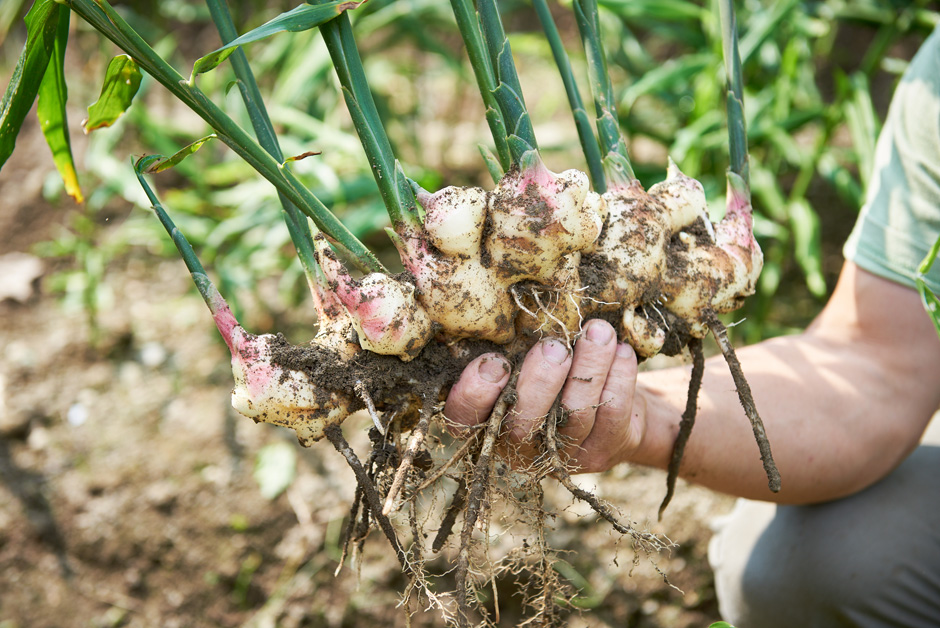
Notably, Shimanto produces the most ginger in Japan, harvested from the fall to winter. Its quality is highly rated and the ginger has become a famous product representative of the Shimanto region.
The key to producing tasty ginger: not doing anything extra to it

We visited the town of Shimanto, about half way down the Shimanto River. Here is a famous person who skillfully produces robust and tasty ginger using a unique technique.
He is Shoichi Kirishima, who operates a lush green vegetable farm, Kirishimabatake, by the river. He grows small lots of over 70 vegetables. His unique perspective for agriculture has gained recognition from not just consumers but from many agricultural associates throughout Japan.
When we visited his field, he pulled out some ginger, he takes prides in, even before we properly introduced ourselves. The gnarled, robust ginger emerged, permeating a strong scent across the field.
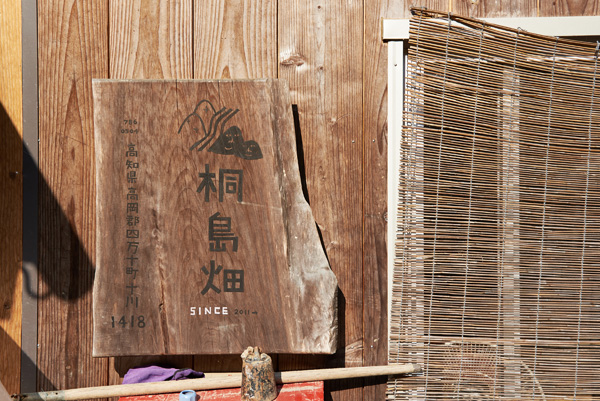
“Freshly picked ginger is still spicy. It is more suitable for pickling and as pickled ginger at sushi bars. We allow the ginger to slowly mature after the harvest. That way, it becomes tastier and spicier.”
He starts planting ginger every April, and harvests it in November. According to Kirishima, the key to making tasty ginger is not doing anything extra to it.
After he sews the seeds he collects from the ginger he grows, he provides minimal care, by weeding, installing nets and adding some more soil, but he basically lets nature take care of the ginger. He does not use any pesticides or chemical fertilizers. Using the power of microorganisms in the soil, he manages to curtail the growth of mold and pathogen. If any illness or mold emerges, he simply removes them.
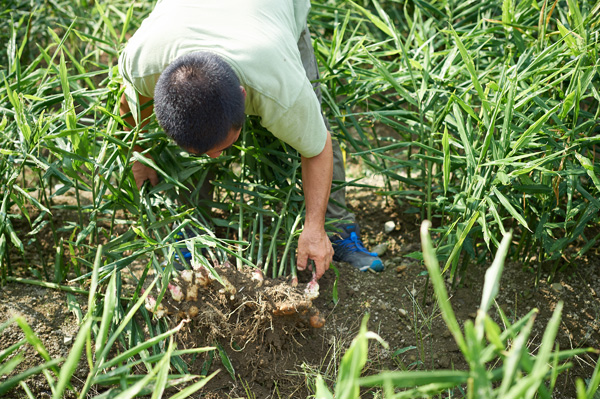
When we asked him what his greatest concern is, he said it was only timing when to spread fertilizers made with chicken manure, depending on how sprouted and grown the ginger is.
“I always think about how to derive the innate power of vegetables. The plants take roots, sprout and produce seeds. The seeds take root. I try to replicate nature’s cycle as much as possible, keep a close eye on the vegetables and help them grow, without disturbing that cycle. Vegetables try to adapt to the environment they are in, and automatically try to get strong. That is why they become very rich in flavor and tasty.”
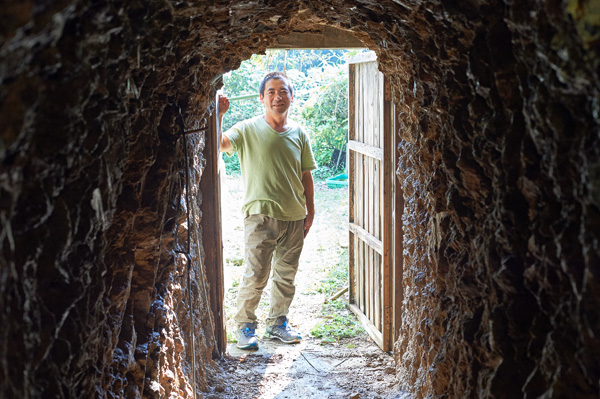
He harvests 3-4 tons of ginger a year and stores it in a cave in the mountain behind his house. Unbelievably, he spent about two months digging the cave himself. A refrigerator is too cold, causing the ginger to shrivel. Outside temperature fluctuations are too big. A cave existing in nature that stays around 14°C throughout the year is apparently the best environment for ginger.
Life with many ups and downs as a farmer. Kirishima reached a simple answer.
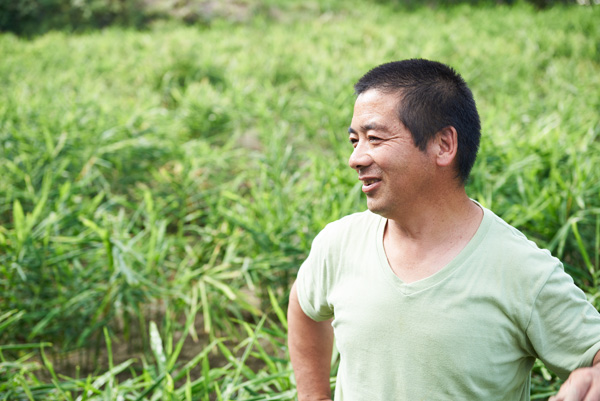
It is nearly 30 years since Kirishima inherited his family farming business.
He had many ups and downs before he established the current method of leaving the ginger to the power of nature.
In the early days he grew eggplants. Just like any other producer, he was spraying pesticides and using chemical fertilizers, which was how agriculture had generally been. However, he began to dislike the taste of the vegetables he harvested, and began also to question the practice of making the same standardized vegetables year after year and selling them by the same distribution route.
“I hit a wall. I no longer found my vegetables tasty, and I thought if everyone was making the same vegetables, it doesn’t have to be me. I was not motivated at all and for a while I did not even go to my vegetable patch.”
He nearly gave up farming, but this “not going to the patch” eventually brought him a breakthrough.
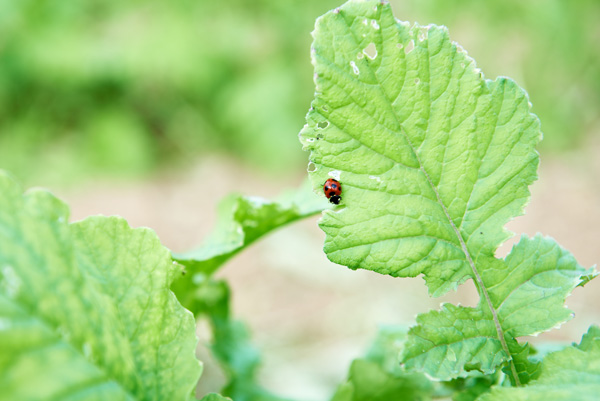
“I visited the field after a long time, and the vegetables were growing by themselves. They were also tasty. It was stunning. Until then I was always thinking about what else I could do. After that experience, I proactively thought what I could do to help the vegetables.”
After that, Kirishima stopped using pesticides and chemical fertilizers. He let the nature take its course, apart from the minimal three steps, which were watering, fertilizing and culling the branches.
At first he had low yields due to the effects of the climate, and he also lost his former distribution channel as he strayed from the formal practice. For a while the business struggled, but after much trial and error, he successfully achieved stable production of tasty vegetables. Gradually he gained regular customers. Now, he has order after order from all around Japan.
Ginger syrup gains popularity
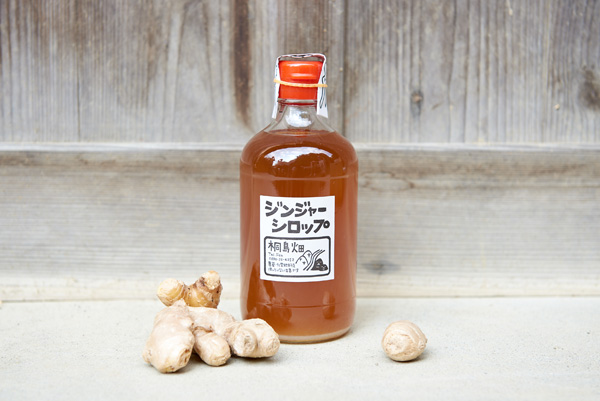
Grown with the power of nature and having a rich flavor, ginger is fit for processing. Especially popular is ginger syrup. Kirishima devised the product in his home kitchen, while thinking about how to make use of unshapely B-grade ginger.
The ginger is finely sliced, cooked in water from the Shimanto River, and that water is reduced further with sugar to make syrup. It has a strong ginger flavor and a non-lingering spiciness. When he started selling the syrup at a roadside station, the delicious syrup became famous by word of mouth, making it a popular product, thanks partly to its warm packaging design.
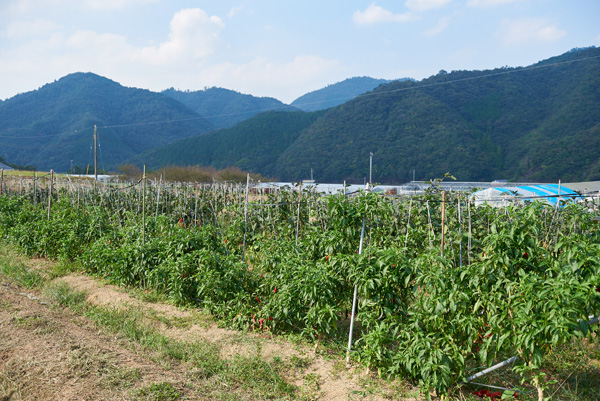
As more orders began coming in for vegetables and processed products, Kirishima hired more staff. He also welcomes people who move from within or outside Kochi Prefecture to engage in farming.
He says he shares the know-how and experience of vegetable farming he gained with much struggle with the younger generation, without holding them back.
“30 years after I started farming, I finally began to have a good grip on my way of farming. Going forward, I would like to pass the baton to the next generation. I cannot end the knowledge I have gained with my generation because farming is all about passing on what had been passed on.”
Enveloped in the land of Shimanto, ginger is being grown with much care and attention by the producer who faces nature with such sincerity. Have a taste of this exquisite ginger, a gift from Shimanto’s field and mountains.
Ginger from Kochi Prefecture
Source:Shoichi Kirishima, Kirishimabatake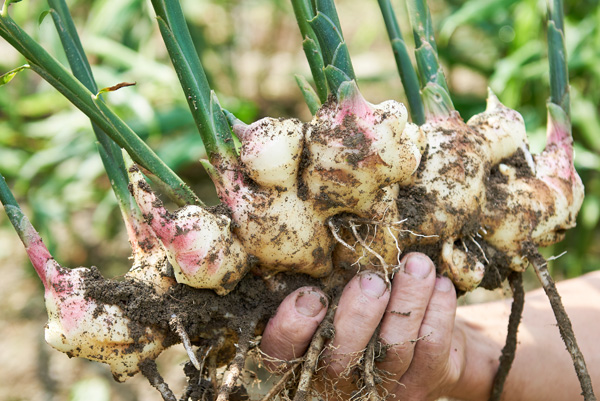
Peak Season
October to November for new ginger. Matured ginger called neshoga is tasty year-round.
Tips
1. If it is new ginger, choose a root that has a lot of redness.
2. If it is mature ginger (neshoga), make sure that the way it grew (a pattern much like the growth rings) is even. You can tell whether the ginger grew fast or slowly by the width of the rings.
Choose ginger that is more yellow than brown (when ginger becomes dry it turns whitish, so it is best to choose ginger before it dries out).
3. If the ginger comes with a stem, choose roots with thick stems
(though this depends on the variety and the condition they were grown in).
How to enjoy them
Freshly harvested ginger is best chopped into fine strips like matches, and deep-fried together as a tempura.

